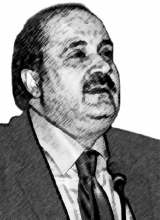You are here
America’s big dream
Apr 19,2018 - Last updated at Apr 19,2018
Death of a Salesman, a 1949 play written by the American playwright Arthur Miller, recipient of the 1949 Pulitzer Prize for Drama, reflects, among other things, America's pursuit of a central, historically distinctive “dream”, and it may serve as a starting point for the sake of the following discussion.
In this play, we see different American characters follow their own versions of that dream. Willy Loman, for instance, has high confidence in the promise of the American Dream this way that a trendy and personally eye-catching man in business will undoubtedly and justifiably acquire the material reliefs offered by the modernity of the American life. Incongruously, his fascination with the shallow merits of prettiness and congeniality is at odds with a more realistic, more gratifying understanding of the American Dream. Willy’s version of amiability is artificial. His visionless belief in an underdeveloped version of the American Dream eventually leads to an inner failure as he fails to realise the difference between the “dream” and his own life.
The American Dream, as a term, is basically a concept, which suggests that anyone who lives in the US can prosper through diligence and can have the ability to lead a blissful, profitable life. Some, however, have extended and honed the term to include such ideas as freedom of thought, speech, belief and contentment, including constructive human interactions. Those Americans who accomplish their form of the American Dream are considered to actually be “living the dream”. Others, however, consider instances of inequality pertinent to class, colour, religion and ethnic group(s), which imply that the so-called American Dream may not seemingly be manageable for everybody.
When immigrants had high expectations and desires for what was a new found land, mainly an unexplored world to the European new comers, their dreams, in turn, were largely concerned with possessing land and starting affluent businesses, a fact that would boost their delight and prosperity. And American men of letters of that time often chose to write about the prevailing American Dream, thus categorising the perception and entrenching it in the new American community.
During the 1930’s Great Depression, albeit, the big US dream was, for most Americans, often interpreted as being entirely ordinary! Rather than being grounded in great fortune or success, this version of the American Dream was, in a way, focused on avoiding such misfortunes as neediness and lonesomeness. And the new American hope among many Americans was focused on one thing: leading a happy life, because, from a historical standpoint, many of them fled extremely hard conditions in their native countries.
The perfectionistic view of the American dream tends to ignore bias and prejudice based on the individual’s colour, ethnicity, faith, gender and nationality, which might impede one’s capability to accomplish certain objectives. For that reason, several forms of the US success dream liken prosperity to contentment, and this way contentment becomes attainable without wealth, even in poverty. While some, on the other hand, argue that the big dream might, more or less, be more of individual accomplishment than economic, financial, social, intellectual and cultural prosperity.
Let’s hope that America will always represent common human aspirations to enjoy a worthier life in all parts of the world than is currently the practice! To use the words of Martin Luther King, Jr., from his famous speech delivered on August 28, 1963, at the Lincoln Memorial, we “have a dream” too to live in peace and relish the values of justice!













